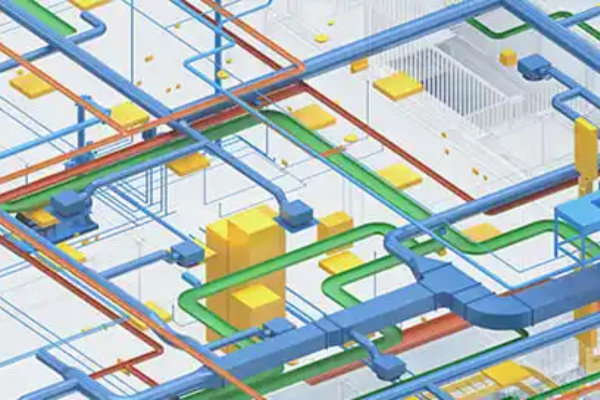A Homeowner’s Guide to Spotting Hidden Building Costs

Strong 8k brings an ultra-HD IPTV experience to your living room and your pocket.
Embarking on a home renovation or new construction project can be hugely exciting. But too often, hidden building costs also sneak in—catching homeowners off guard and stretching both budget and patience. This guide walks you through key areas where concealed expenses lie, and how smart planning helps you stay in control.
1. Scope Creep: When the Project Grows Without Noticing
It starts innocently: you decide to upgrade lighting and later add ceiling fans, switch to premium materials, or change room layouts entirely. Each minor decision compounds.
Tip: Create a detailed scope before work begins—layout, finishes, fixtures—and lock it in with your contractor. Any changes after that should be documented with extra cost estimates.
2. Site Preparation and Foundation Surprises
Often overlooked until bills arrive: issues like unstable soil, water logging, buried debris or rock, termite damage, or uneven terrain can escalate excavation and foundation costs.
Tip: Invest in a soil test and professional site inspection early. Even a small extra cost upfront can prevent big surprises later.
3. Permits, Regulations, and Unexpected Fees
Every city, muncipality, or canton has its own permit processes. You might face zoning laws, impact fees, inspection costs, connection charges—for electricity, water or sewage—and more.
Tip: Confirm required approvals, their fees, and timelines before signing. Some approvals might take weeks or trigger extra fees for revisions or resubmissions.
4. Structural and Subsurface Discoveries
Cracks in walls, hidden rot, outdated wiring, or poor insulation can require structural reinforcement, replacement rafters, rewiring, or new insulation—costs seldom included in surface estimates.
Tip: Ask for a comprehensive inspection report—especially when renovating—and factor in a contingency allowance (10–15%) for structural or hidden system fixes.
5. Materials: Availability and Price Volatility
Material costs can swing sharply—in a few months or even weeks—due to supply shortages, currency fluctuations or inflation. If your quote locks materials at current prices, fine—but many don’t.
Tip: Secure materials early or ask for price lock guarantees. Clarify who bears costs if prices rise during the project.
6. Labor and Subcontractor Add Ons
Attractive quotes may assume ideal conditions. Once the site throws up challenges (weather delays, access issues, mis‐dimensions), contractors sometimes levy extra “crew over time,” travel surcharges, or specialized subcontractor fees.
Tip: Spell out labor rates, site access arrangements, and contingency allowances in your contract. Request daily or weekly progress logs to spot over charging or idle downtime.
7. Waste, Storage, and Disposal Charges
Everyone expects concrete and leftover materials—but did you factor in skip bin fees, haul away disposal, or safe storage? If space is tight, overnight storage and handling costs can add up.
Tip: Clarify who’s responsible for cleanup, waste bins, contaminated soil or debris disposal—and get a firm quote for disposal charges.
8. Utility Connections and Temporary Services
Before the main building is operational, you may need temporary electricity, water, portable toilets, fencing, or security lighting. These services often carry setup charges and ongoing rental fees.
Tip: Ask for a breakdown of temporary utility needs. Is the contractor providing it, or will you be billed separately? Include set up and removal costs.
9. Finishing Touches and Upgrades
Fixtures, paint, tiles, hardware, smart home devices—each tiny “nice to have” upgrade can quickly balloon the budget. “Standard” finishes often exclude better quality or premium aesthetics.
Tip: Define “standard” vs. “upgrade” clearly. Have a finishes schedule that lists materials, brands, final costs and allowances.
10. Project Delays and Time Related Costs
Unforeseen delays—weather, permitting, supply lags—can push your project past the estimated timeline. That can trigger penalties, extended labor charges, or even inflation on materials as time drags on.
Tip: Build cushion into your timeline—include “liquidated damages” clauses for delays. Also assign responsibilities for delay causes (e.g. homeowner change requests vs. contractor/vendor supply issues).
Mastering the Hidden Costs: A 4 Point Checklist
Step What to Do Why It Matters
1. Budget 10–20% Contingency Always pad your base estimate Hidden surprises happen—reserves protect you
2. Lock-in Fix Price Quotes Agree on fixed rates where possible Avoid cost-shock from material and labor inflation
3. Define All Deliverables Create a project brief and finish schedule Clarity avoids assumptions and disputes
4. Maintain Regular Check ins Weekly reviews during site visits Early signs of over scope or delays get caught in time
Final Thoughts
Smart homeowners approach building projects with open eyes. Hidden costs often stem from uncertainty—about site conditions, scope, materials or timing. With a structured approach, clear contracts, and proactive monitoring, you can turn your dream renovation into a financial success as much as a beautiful upgrade.
Note: IndiBlogHub features both user-submitted and editorial content. We do not verify third-party contributions. Read our Disclaimer and Privacy Policyfor details.







